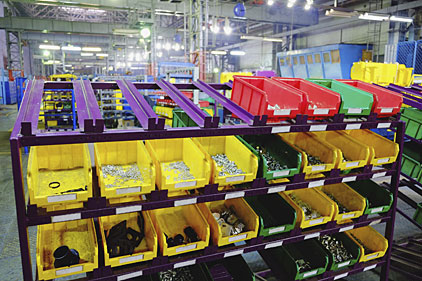Spare parts inventory optimization is great. It helps companies identify where they are holding too much spare parts inventory and correct those holdings to reflect their expectation of current needs. As a result, they can reduce their working capital and their inventory management costs. Spare parts inventory optimization helps ensure that you hold the right parts, in the right quantity, in the right place and, hopefully, at the right time.
But surely what you really need is not spare parts inventory optimization but spare parts inventory prevention. Optimization happens after you have spent your money while prevention happens before. With health and safety, our approach is always prevention so why not with inventory?
Have you ever noticed that while the great majority of articles, literature and software relating to spare parts inventory management focuses on inventory optimization, that there is almost none about inventory prevention?
So, isn’t it time we started talking about spare parts inventory prevention?
In my mind, the answer is emphatically yes.
Why is the literature on this so thin? I think there are a few reasons why spare parts inventory prevention gets so little airtime:
1. It’s hard to measure. How do you measure “what might have been” or “what could have been”? It’s pretty hard if you are not keeping records of past decisions and using those as a comparison. To some extent, spare parts inventory prevention requires a leap of faith that over time total inventory levels will remain low or even reduce, and that is something that we can measure.
2. There is no existing problem. OK, of course there is a problem: You hold too much inventory, but this is usually linked to optimization programs. The dirty secret of consulting is that you need to find and highlight the potential client’s problem in order to sell a project. With inventory prevention, it can be difficult to be definitive about the problem with respect to direct cause and effect. Hence, consultants almost never talk about this (well, except me).
3. There are no software sales in spare parts inventory prevention. Pretty much all optimization software relies on historic data, and with prevention there may not be any history because the parts are new (to you at least). So, do you think software vendors are going to talk about prevention? Of course not.
4. The spare parts vendors would sell you less. Spare parts inventory prevention is hardly in the interest of the equipment vendors that want to sell you a “spare parts package” with your next major capital upgrade so they are not going to talk about prevention; they will only talk about things like “two-year packages.”
Ultimately, inventory prevention is what you need because it is through inventory prevention that you avoid buying too much inventory in the first place. It is through inventory prevention that you optimize your inventory from Day One and preserve your cash in advance rather than trying to claw some back retrospectively through optimization.
Achieving and implementing a program of inventory prevention is unlikely to come from outside sources. It requires your management foresight and action. It requires the leadership of organizations that are managing spare parts inventory to stand up and tell all their vendors of parts, services and software they want to prevent the accumulation of excess inventory rather than try to address the problem with so-called optimization at some undefined future date. And it requires the development and implementation of guidelines that direct those initial stocking decisions.
Yes, I believe that it is time we all started talking about inventory prevention.
Phillip Slater specializes in materials and spare parts management. He is the founder of the best practice Web site SparePartsKnowHow.com and the author of eight books, including “Smart Inventory Solutions and The Optimization Trap.” For a complimentary copy of the e-book “5 Myths of Inventory Reduction,” please visit Slater’s personal Web site at www.PhillipSlater.com.






Report Abusive Comment